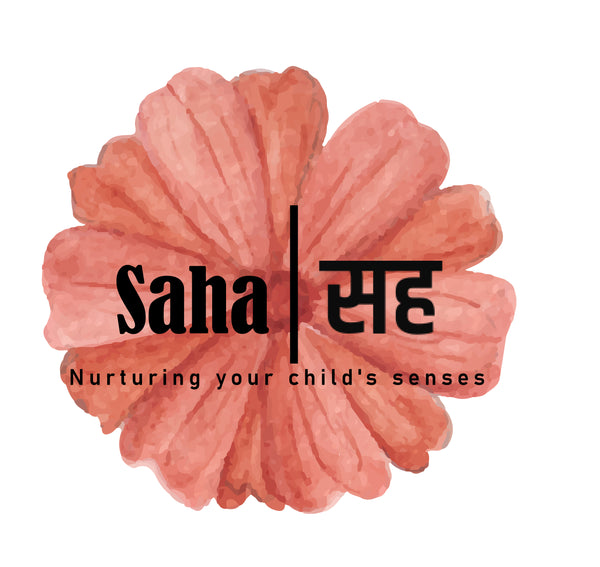
The Significance of Waldorf Blocks in Child Development
Share
Waldorf blocks are a distinctive type of wooden block used primarily within the framework of Waldorf education, which emphasizes creativity, imagination, and the use of natural materials. These blocks serve as essential tools for learning and development in young children, fostering not only their cognitive skills but also their emotional and sensory growth. The key features that characterize Waldorf blocks—natural materials, irregular shapes, open-ended play, simplicity, educational value, durability, and aesthetic appeal—collectively contribute to a holistic approach to early childhood education.
Natural Materials
One of the most defining attributes of Waldorf blocks is their construction from natural wood. Typically left unpainted or finished with non-toxic, natural oils, these blocks offer a tactile connection to the natural world. The preservation of the wood's texture, grain, and unique imperfections enhances a child’s sensory experiences, engaging their sense of touch and encouraging a deeper appreciation for the environment.
Irregular Shapes
In contrast to traditional geometric blocks, Waldorf blocks are characterized by their non-uniform, irregular shapes—ranging from slices of branches to rounded pieces. This unique feature stimulates creativity and problem-solving, as children are often inspired to innovate with shapes that resemble elements from their natural surroundings, such as stones or pieces of bark. Such organic forms invite imaginative play, allowing children to construct a variety of structures that reflect their creativity.
Open-Ended Play
Waldorf blocks excel in promoting open-ended play, an essential aspect of early childhood development. The versatility of these irregular shapes means that there are no prescribed uses or designs that children must adhere to. Instead, they are free to build anything their imaginations can conceive—from castles to vehicles, or even abstract sculptures. This freedom fosters an environment of exploration and experimentation, which is crucial for cognitive growth.
Focus on Imagination and Creativity
The unique characteristics of Waldorf blocks encourage children to think outside the box. The challenges presented by the non-traditional shapes inspire innovative construction techniques, while the absence of detailed features or instructions allows children to engage in storytelling and role-playing. In this context, the blocks can transform into anything—a mountain, a house, or a bridge—limited only by the child's imagination, thus further enhancing creative thinking.
Emphasis on Simplicity
Aligned with the Waldorf philosophy, Waldorf blocks feature a minimalist design that eschews bright colors and complex features. This simplicity helps children focus on the act of play itself, unencumbered by distractions from electronics or gimmicky toys. It encourages engagement with the materials at hand, fostering sustained attention and mindfulness in play.
Educational Value
Beyond fostering creativity, Waldorf blocks hold significant educational value. As children manipulate and stack these blocks, they develop essential spatial awareness, enhancing their problem-solving skills. The varied shapes encourage fine motor skill development and improve hand-eye coordination, which are fundamental for later academic tasks. Moreover, the play involved with these blocks introduces basic concepts of geometry, balance, and symmetry in a natural and engaging context.
Durability
Constructed from solid wood, Waldorf blocks are designed for longevity. Their durability ensures they can withstand the rigors of play over years, making them a sustainable choice for parents and educators. This long-lasting nature not only justifies the investment in these toys but also contributes to the environmental ethos of Waldorf education, which emphasizes natural and enduring materials.
Aesthetic Appeal
Finally, the natural beauty and organic shapes of Waldorf blocks enhance the visual and tactile environment of a child’s play space. This calming aesthetic fosters a sense of peace and connectivity to nature, aligning with the core principles of Waldorf education that prioritize harmony and simplicity. By incorporating these beautiful, functional objects into their play, children are subtly encouraged to cultivate a lifelong appreciation for the natural world.
In conclusion, Waldorf blocks embody a rich intersection of creativity, education, and connection to nature. Their natural materials, irregular shapes, and emphasis on open-ended play make them powerful tools for promoting holistic development in children. By fostering imagination and critical thinking, they play a vital role in nurturing the skills and values necessary for lifelong learning, resonating deeply with the overarching philosophy of Waldorf education.
Footnote
- Edwards, C., & Gandini, L. (2012). The Hundred Languages of Children: The Reggio Emilia Experience in Transformation (3rd ed.). Praeger.
- Elkind, D. (2007). The Power of Play: Learning What Comes Naturally. Da Capo Press.
- Oldfield, L. (2001). Free to Learn: Introducing Steiner Waldorf Early Childhood Education. Hawthorn Press.
- Nicol, J., & Taplin, J. (2012). Understanding the Steiner Waldorf Approach: Early Years Education in Practice. Routledge.
- Warden, C. (2015). Nature Kindergartens and Forest Schools. Sage Publications.
- Pyle, A., & Danniels, E. (2017). A continuum of play-based learning: The role of the teacher in play-based pedagogy and the fear of hijacking play. Early Education and Development, 28(3), 274-289. https://doi.org/10.1080/10409289.2016.1220771
